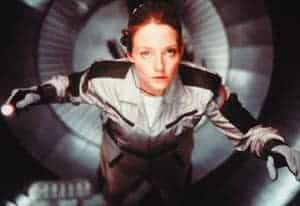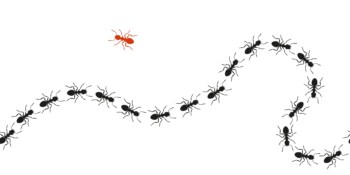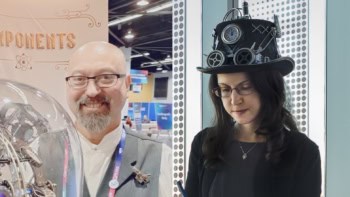Mad, Bad and Dangerous?: The Scientist and the Cinema
Christopher Frayling
2005 Reaktion Books 240pp £19.95/$16.00hb

Cinema is arguably the first art form created by modern science. One might therefore expect that scientists would be accorded a certain degree of respect by such a highly technical medium. But as Christopher Frayling’s fascinating new book Mad, Bad and Dangerous? illustrates, this has rarely been the case.
Frayling, who is a historian, critic and broadcaster, surveys nearly 100 years of cinema history to arrive at the disappointing – though hardly surprising – conclusion that portrayals of scientists in the movies typically mimic and perpetuate cultural stereotypes. Citing exhaustive (sometimes bordering on tiresome) recitations of plot and character summaries from hundreds of films, we learn that most celluloid scientists are aloof, socially inept, amoral creatures driven by pathological obsessions with the secrets of the universe and the power that understanding these secrets might bestow.
In the early decades of the 20th century, scientists were commonly portrayed as modern alchemists. Press accounts of the work of real scientists echoed and reinforced these sentiments. Thomas Edison was the “wizard” of Menlo Park, while Guglielmo Marconi was a “magician” summoning voices out of the ether. The laboratories of fictional scientists from Dr Frankenstein to Dr Rotwang (the evil genius in Fritz Lang’s 1926 film Metropolis) were filled with boiling potions and Tesla coils. Film directors clearly gave little regard to what a real laboratory looked like.
Not every scientist in this era was cast as an evil genius, but even the sympathetic ones came off as less than fully human. During the 1930s and 1940s, “bio-pics” based on the lives of real scientists enjoyed a certain popularity. Edward G Robinson won critical praise for his portrayal of Paul Ehrlich, the German bacteriologist who devised the first effective treatment for syphilis. Louis Pasteur, Marie Curie, Edison and other giants of the 20th century received film treatments as well.
But because their scientific achievements were not considered particularly dramatic or marketable, the studio bosses looked for emotional hooks in these films – a love story if possible. The films would be built around the formula of a lone, renegade visionary fighting against doubting and reactionary peers to achieve a scientific breakthrough. But even in these well-intentioned works, the personality quirks and “egghead” intellectualism of the scientist/hero tended toward caricature, reinforcing the view that scientists are fundamentally unlike other people. These films often misrepresented the work of their protagonists as well, either out of ignorance or careless dramatic licence.
For me, the most absorbing section of Frayling’s book charts the involvement of scientists in movie making. Before filming Frau im Mond (Woman in the Moon) in 1929, Lang enlisted the help of the dean of German rocket scientists Hermann Oberth as a technical advisor. Oberth helped Lang envision a rocket trip to the Moon as realistically as possible. The scientist/hero of the film was a hapless, almost comic figure, but the launch sequence that rockets him into space was technically credible, as well as visually stunning and dramatic. (Oberth’s advice does not appear to have included any basic astronomy; in the film, the Moon harbours a breathable atmosphere.)
In the early 1950s Oberth’s most celebrated student – the rocket scientist Wernher von Braun – wrote a series of articles promoting the idea of human space travel for Collier’s magazine. Hollywood set artist Chesley Bonestell illustrated von Braun’s vision with stunning paintings of giant, spinning space stations and nuclear-powered vessels bound for Mars. The articles were hugely popular, and the showmanship that von Braun demonstrated in selling his rocket dreams to the American public attracted the attention of an even more successful showman – Walt Disney.
Disney was producing a TV series called The Wonderful World of Disney to promote his new theme park, Disneyland, which included a province called Tomorrowland. In 1955 von Braun was featured in three episodes of the series touting the wonders of Tomorrowland, and helped design the “trip to the Moon” ride located there. As we all know, the Soviet Union caught up with science fiction in 1957 with the launch of Sputnik. Frayling suggests that if it had not been for the Cold War and Hollywood, humans would not as yet have walked on the Moon. I suspect he is right.
Von Braun’s participation in the German war machine was never mentioned during his work for Disney, but it was addressed directly in I Aim for the Stars, a bio-pic produced in 1960. A fictional US Army officer appears in some of the post-war scenes to make pointed comments about von Braun’s involvement with his previous employer, but by the end of the film the charming German rocketeer (played by Curt Jurgens) has all but won him over. Clearly von Braun’s influence on this film was not limited to technical advice, a fact not lost on his critics. (One reviewer of the time suggested the subtitle of I Aim for the Stars should have been “But Sometimes I Hit London”.)
The atomic bomb and the fear of the Soviet Union conjured a darker tone in science-fiction films during much of the 1950s and 1960s. Radiation – heralded for its potential to heal in Madame Curie – produced all manner of rampaging mutant monsters in films such as Them!. But nuclear nightmares had their lighter moments too. The ultimate Cold War satire premiered in 1964 – Doctor Strangelove: Or How I Learned to Stop Worrying and Love the Bomb. The title character, brilliantly portrayed by Peter Sellers, was allegedly inspired by von Braun.
Frayling’s interest in scientists on the big screen was piqued by a survey that the anthropologist Margaret Mead conducted in 1957 to gauge the attitudes of US high-school students toward scientists in the real world. The common denominators – a “brainiac” in a white lab coat and horn-rimmed glasses, surrounded by test tubes and Bunsen burners – confirmed the pervasiveness of the familiar stereotypes. Later studies, including one conducted in 2003 by Frayling himself, asked somewhat younger children to draw a scientist. Suffice to say that little has changed in nearly 50 years.
But Frayling believes that the failure of scientists to communicate clearly with the public has strongly contributed to their unflattering representations in film. He takes the scientific community to task for its alleged ivory-tower condescension and a general lack of enthusiasm for justifying its work in lay terms. This smacks a bit of blaming the victim. Recent science popularizers like Carl Sagan and Stephen Hawking have certainly made a positive impact on public attitudes toward scientists (as Frayling acknowledges) but the scientist-as-nerd image remains deeply ingrained in the popular culture. I suspect it would take a protracted and costly public-education campaign to rectify this.
Frayling concludes that if film-makers had embraced a more enlightened view of science and the people who practise it, some extremely entertaining movies might never have been made. Possibly, if films like Mars Needs Women and Doctor Cyclops are your cup of tea. But is it really so hard to imagine a great movie that features scientists who do not focus their research on building monsters out of spare body parts? One would hope the next century of cinema provides a positive answer.



